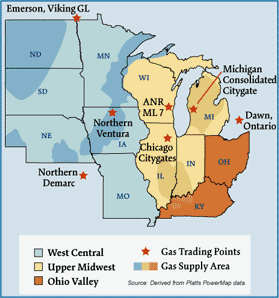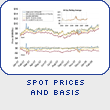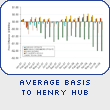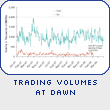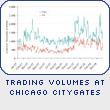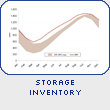| Market Description |
 Back to Top Back to Top |
-
Seasonal space heat requirements strongly influence the structure of the Midwest gas market. On an average annual basis, residential and commercial gas use accounts for about 60 percent of overall gas consumption. Its largest gas consumers are local distribution companies with an obligation to serve core customers in the winter. The region has over 100 gas storage facilities representing more than 3 Tcf of total storage capacity. Much of this capacity is located near key citygates to meet peak day needs. An extensive network of pipelines transports gas from nearly all major supply basins in North America to this region. Imports from Canada and growing supplies from the West serve as baseload volumes; swing gas comes from the Gulf. The power sector’s annual share of gas use is less than 10 percent because natural gas is generally not the marginal fuel. Nevertheless, gas use by generators has been growing as in other regions of the U.S.
| Geography |
 Back to Top Back to Top |
-
States covered: Illinois, Indiana, Iowa, Kentucky, Michigan, Minnesota, Missouri, Nebraska, North Dakota, Ohio, South Dakota, and Wisconsin.
| Major Trading Hubs |
 Back to Top Back to Top |
- Chicago Citygates, Dawn, Michigan Consolidated, Northern Natural Ventura, and Northern Natural Demarcation.
| Storage |
 Back to Top Back to Top |
-
State Capacity: Illinois, Michigan, and Ohio account for 79 percent of total Midwest storage capacity. The Midwest region contains the largest number of underground natural gas storage facilities (150) and the largest volume of natural gas storage capacity (3.3 Tcf) of any other region. Michigan accounts for 16 percent of total U.S. working gas capacity, the largest of any State in the country.
Aquifer Capacity: 39%
Depleted Field Capacity: 61%
Total Capacity: Midwest has 39 percent of total U.S. storage capacity.
Major Storage Pipelines and Capacity:
Natural Gas Pipeline of America: 256 Bcf
ANR:192 Bcf
Northern Natural:68 Bcf
| Demand |
 Back to Top Back to Top |
-
2005
- Residential: 37%
- Commercial: 20%
- Industrial: 32%
Sector:
State: Illinois, Michigan, and Ohio make up 54 percent of total Midwest demand and 12 percent of total U.S. demand.
Midwest Total: 4.8 Tcf annually (13.6 Bcfd), which makes up 22 percent of total U.S. annual demand.
Consumer Total: 20.5 million, which is approximately 30 percent of total consumers in the U.S.
Key Consuming States:Illinois, Michigan, and Ohio comprise 55 percent of the total number of consumers in the Midwest and about 16 percent of the total number of consumers in the U.S.
Residential Consumers: 92%
| Production |
 Back to Top Back to Top |
-
State: Kentucky, Michigan, Ohio, North Dakota and Missouri make up 99 percent of total Midwest production. They make up 2.9 percent of total U.S. production.
Total: Total Midwest production equals 522 Bcf annually (1.4 Bcfd) The Midwest offsets its relatively minor gas production profile - just 3 percent of total U.S. daily production - through its interconnectivity to other upstream supply areas throughout North America and access to market area storage.
Yearly Change: Production declined 16 percent in 2005. Production in Missouri was down 71 percent from the prior year.
| Pipeline Flows |
 Back to Top Back to Top |
-
Average Daily Northwest Deliveries to the Midwest:
2005: 2.2 Bcfd
2006: 2.4 Bcfd
Major Pipelines: Trailblazer, Cheyenne Plains, and Colorado Interstate Gas carry approximately 2.0 Bcfd from the Rockies to the Midwest.
Average Daily Midwest Deliveries to the Northeast:
2005: 0.9 Bcfd
2006: 1.0 Bcfd
Major Pipelines: ANR and Panhandle carry most of the gas from the Midwest to the Northeast.
| Imports and Exports |
 Back to Top Back to Top |
-
Average Daily Imports from Canada into the US:
2005: 4.9 Bcfd
2006: 4.7 Bcfd
Major Importers: Alliance and Northern Border pipelines flow the majority of the gas from Canada to the Midwest. They flow:
2005: 76%
2006: 78%
Average Daily Exports from U.S. into Canada:
2005: 0.67 Bcfd
2006: 0.65 Bcfd
Major Exporter: Vector and Great Lakes are the principal pipelines that export gas from the Midwest to Canada. They flow:
2005: 93%
2006: 95%




